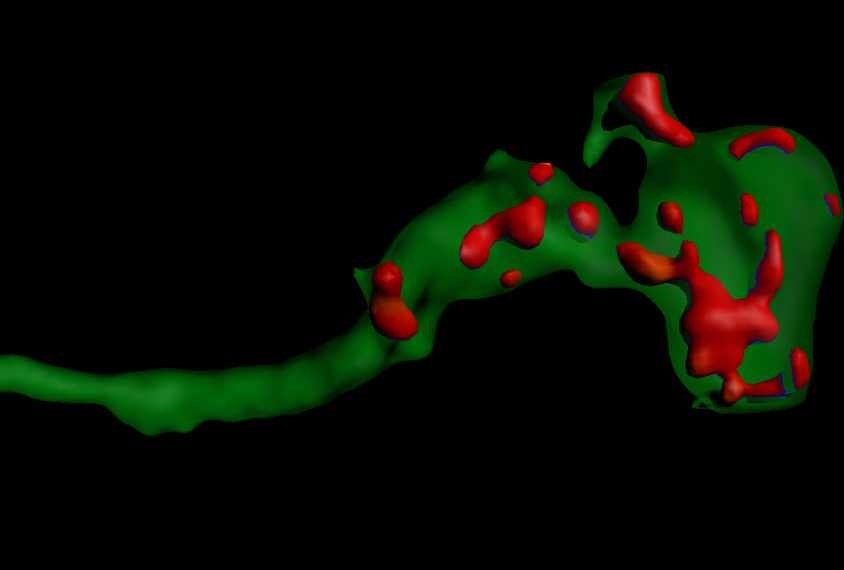
In immature brain cells, RNAs hitch ride with fragile X protein
A clue to the origins of autism may exist among the molecules that transport RNA in the developing brain.
A clue to the origins of autism may exist among the molecules that transport RNA in the developing brain: Researchers found that the protein missing in fragile X syndrome typically escorts RNA in the embryonic mouse brain1. About one-third of individuals with fragile X syndrome are also diagnosed with autism.
The protein, called FMRP, is known to shuttle RNA in mature neurons. It also shuts down RNA expression for at least 900 genes in mature neurons, and more than 100 genes in immature neurons.
An absence of FMRP in immature neurons could derail brain development, says lead investigator Debra Silver, assistant professor of molecular genetics and microbiology at Duke University in Durham, North Carolina. “If you disrupt those processes, you might ultimately contribute to autism,” she says. The work appears in the December Current Biology Report.
RNA molecules must travel within a cell so that genes are expressed in the right place at the right time. Lack of FMRP may jam this molecular highway, disrupting the the cell’s normal functions.
The researchers extracted brain tissue from 14- to 15-day-old mouse embryos. They sliced the tissue into ultra-thin sections and used fluorescent tags to track the movement of seven RNAs under a microscope.
They homed in on radial glial cells — elongated neural stem cells that act as ladders for developing neurons to climb to their destinations in the brain. If RNA transport goes awry in these cells, the researchers reasoned, the effects could ripple across the brain, leading immature neurons astray.
Intriguing list:
Silver and her team set out to determine how RNA travels hundreds of micrometers from the nucleus of a radial glial cell to the cell’s tip, or ‘endfoot,’ where the RNA is converted to protein.
They identified several RNAs that make this trip. The molecules move at a speed of 2.4 micrometers per second — on pace with RNA transport in mature neurons, Silver says. FMRP helps shuttle at least one of these RNAs on its journey.
At the endfoot, FMRP also binds to 115 RNA molecules to suppress their conversion to protein. Most of these RNAs play a role in signaling within and between cells, as well as in the formation of the cell’s skeleton. FMRP may prevent these RNAs from being expressed until they are needed, Silver says.
About one-third of the genes repressed by FMRP are linked to neurological conditions, and roughly 15 percent are associated specifically with autism. FMRP binds to the RNA of seven genes that it was not previously known to regulate. One of these RNAs is of the gene CAMSAP2. In 2012, researchers reported a duplication of this gene in a person who has both autism and intellectual disability2.
The study provides “an intriguing list” of RNAs not previously known to interact with FMRP, says Jennifer Darnell, research associate professor of molecular neuro-oncology at Rockefeller University in New York City, who was not involved in the study. Scientists should verify that these RNAs bind to FMRP in people, Darnell says.
Silver’s team is studying how FMRP interacts with the newly discovered RNAs to influence the expression of genes linked to autism.
References:
Recommended reading

New organoid atlas unveils four neurodevelopmental signatures

Glutamate receptors, mRNA transcripts and SYNGAP1; and more

Among brain changes studied in autism, spotlight shifts to subcortex
Explore more from The Transmitter

Psychedelics research in rodents has a behavior problem
Can neuroscientists decode memories solely from a map of synaptic connections?
